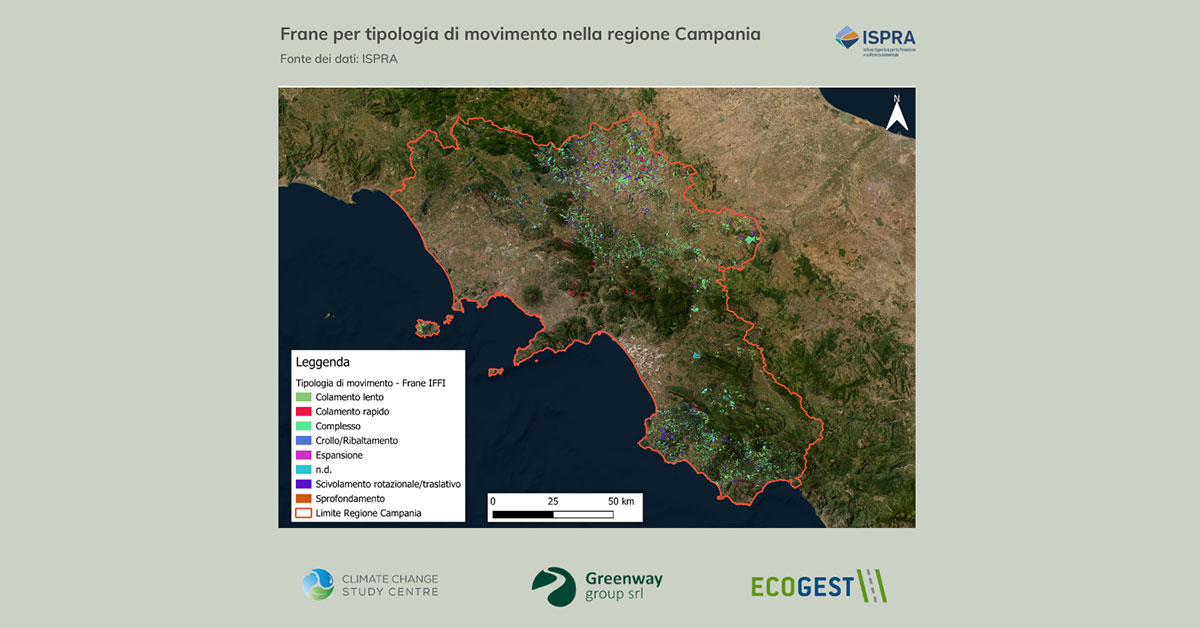
Rising temperatures, drought and hydrogeological hazards put the region at risk. Timely and innovative intervention policies are needed.
High urbanization and high hydrogeological, seismic and volcanic vulnerability are the main characteristics of the Campania region, which is called upon now more than ever to develop intervention plans that also take into account the climate changes its territory is experiencing.
According to analysis by Ecogest’s Center for Climate Change Studies (CCSC), the region is among the most vulnerable in Italy, and forecasts for the coming decades are alarming.
The data show a significant increase in average temperature, especially in the city of Naples, with a projected increase of about 6 °C between 2071 and 2100.
Drought, accompanied by extreme rainfall events, is another growing problem. Forecasts indicate an increase in heavy rainfall during the winter and fall months, while a sharp decline in rainfall is expected in spring and summer. The maximum number of consecutive days without rain could increase to 50 percent in the summer season.
Hydrogeological risk is of particular concern: about 28 percent of the population lives in medium to high hazard areas, while landslide-prone areas cover about 15 percent of the regional territory.
“The territory of Campania is exposed to major natural hazards that are higher than the national average. These hazards profoundly influence socioeconomic development and spatial planning. Our study aims to provide concrete data to guide future infrastructure and policy choices. It is essential to act promptly, adopting concrete solutions based on scientific innovation and advanced technologies,” said Valerio Molinari, president of CCSC and shareholder of Ecogest Spa.
Urgent action for infrastructure
Transportation infrastructure is particularly vulnerable to climate change. President Molinari stresses the importance of targeted interventions, such as:
– Advanced technologies: in-line cameras, weather stations, and road load sensors.
– Planting of native trees: to improve sustainability and protect infrastructure.
The fight against climate change requires an immediate and concrete commitment. Sustainable policies and technological innovation are essential to mitigate risks and ensure a secure future for the next generations.


